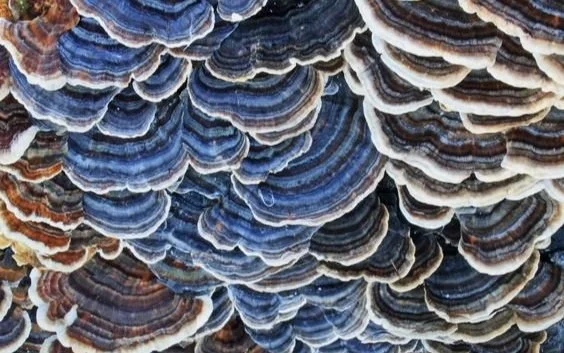— Turkey Tail #1: A Brief History
Did you know that one of the most vital functional mushrooms known to ancient and modern times is probably located right in your backyard?
Depending on where you're located, time of year, current weather conditions, you might be able to locate Trametes versicolor (Turkey Tail) somewhere in the heart of the closest forest. Plus, if you're a forager, it’s one of the easier mushrooms to identify. Once you learn the distinguishing characteristics, it’ll be hard to make mistakes from there on out. Turkey Tail is by far the most humble mushroom quietly permeating the ground beneath and the trees at your sides. It has captured the attention of health enthusiasts and researchers alike for its array of health benefits that go beyond its captivating appearance.
For centuries, traditional healers in Asia have revered this mushroom for its purported medicinal properties, which was believed to aid in immune support as well as fight infections. . In Chinese medicine, it's known as Yun Zhi, and in Japan, as Kawaratake, both translating to "cloud mushroom" for the mushroom's resemblance to swirling clouds. In Holland, it is known as elfenbankje, meaning fairy bench; and in Germany, schmetterlings-tramete, meaning butterfly tramete. Turkey Tail weaves a deep mycelial foundation for functional medicine in ancient cultures all over the world.
Throughout history, indigenous cultures around the world have incorporated Turkey Tail into their traditional remedies, recognizing its potential to support the body's natural defenses. The mushroom's journey from ancient herbalism to modern scientific scrutiny is a testament to its enduring significance. Today we look to Turkey Tail for the same reasons we did in ancient times, for immune support, and even more recently, for gut health.


